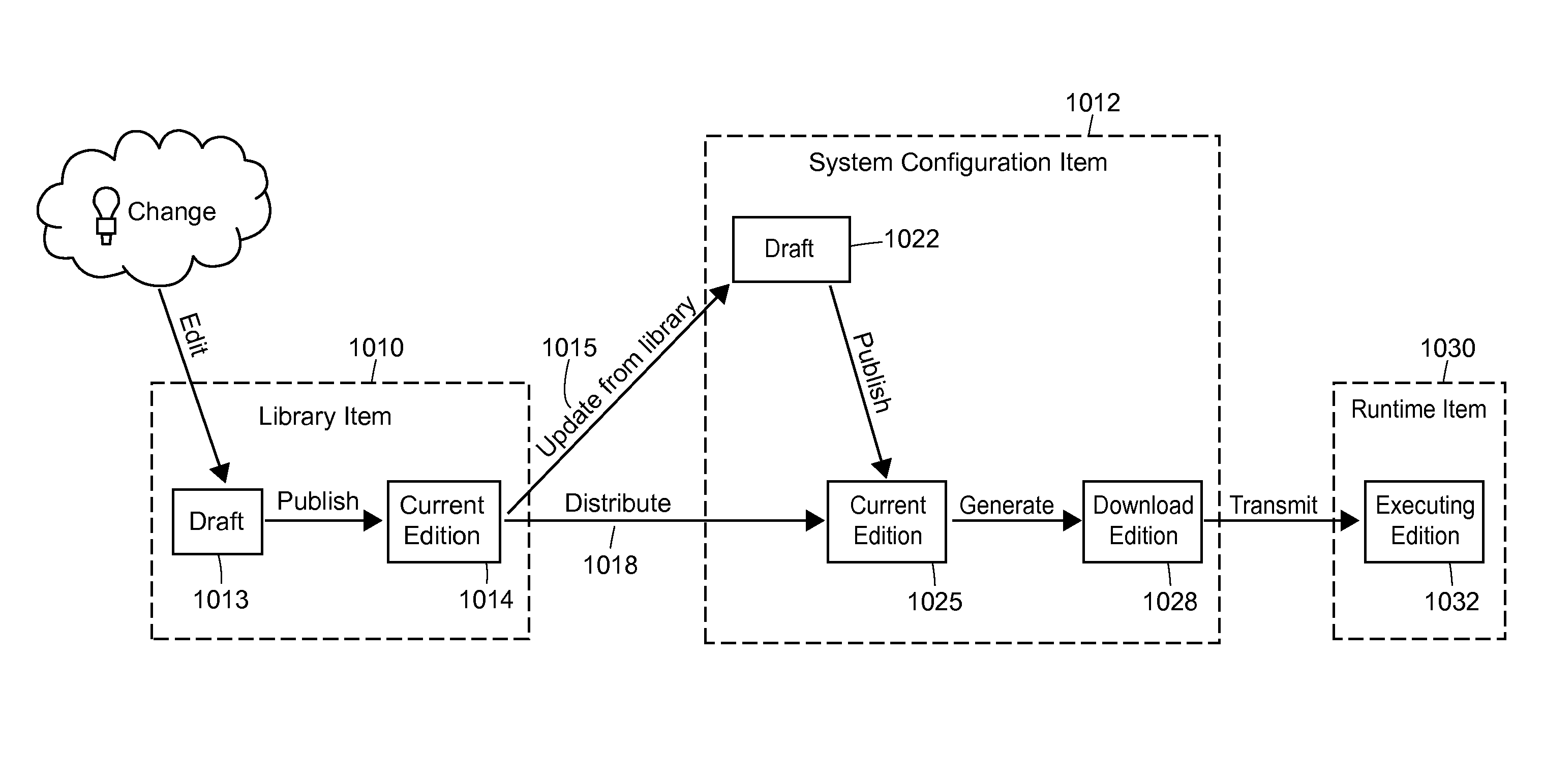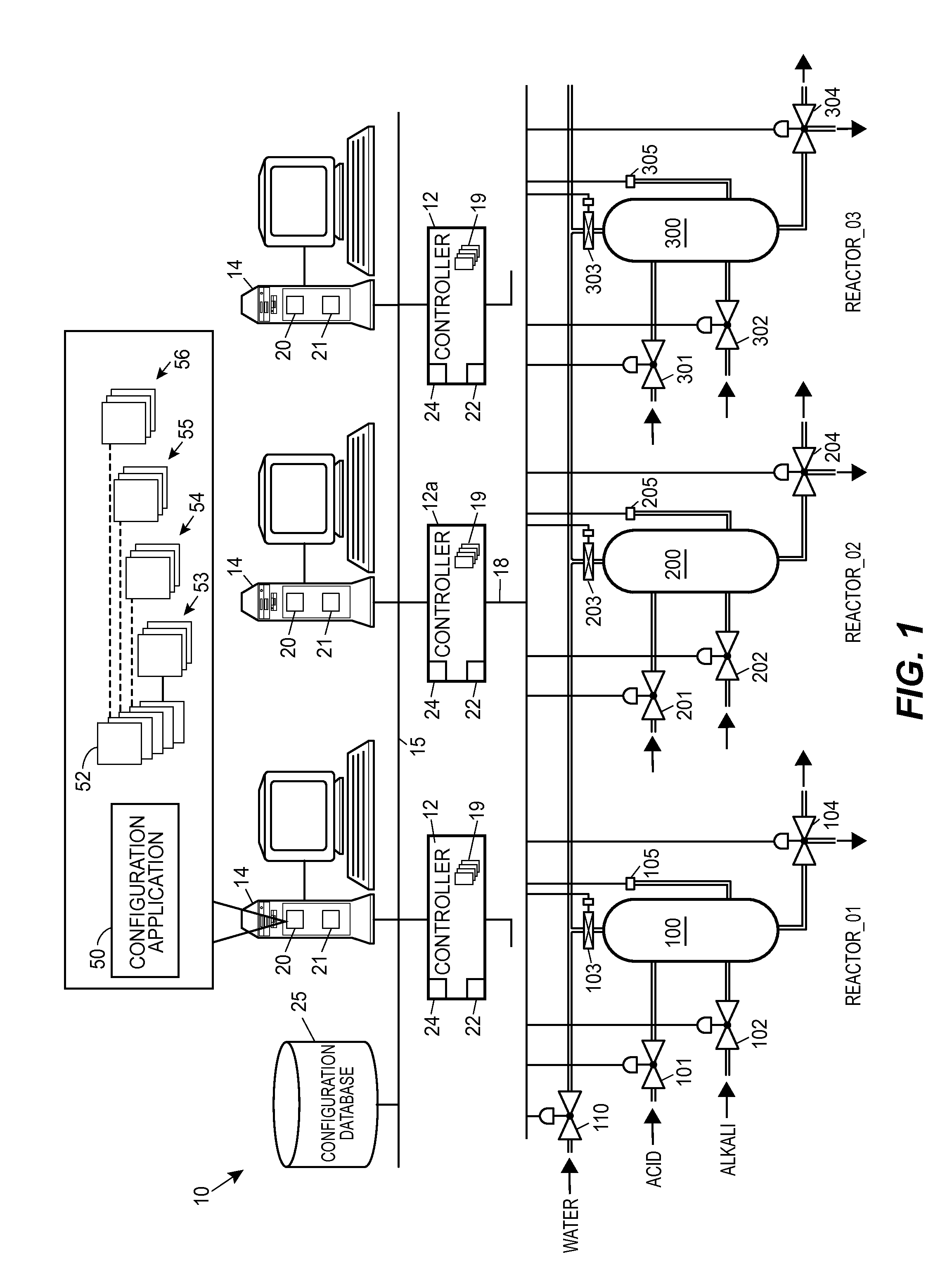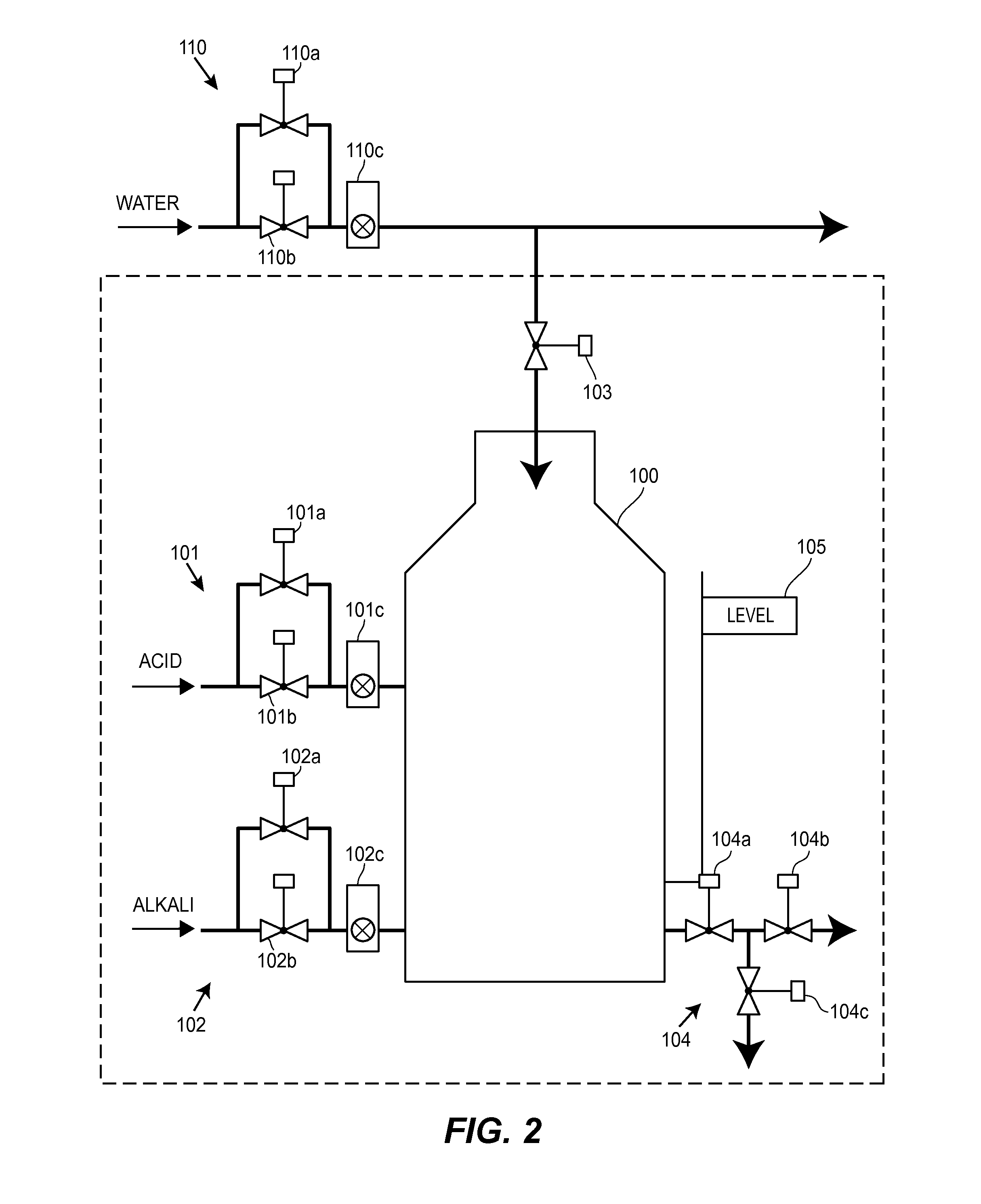Method and apparatus for managing process control configuration
a technology of process control and configuration, applied in the field of process plants, can solve the problems of reducing the original productivity gain obtained by using configuration class objects, time-consuming and maybe fraught with errors, and inability to change all instances associated with a particular module class object at the same time, so as to achieve the effect of easy determination and easy determination
- Summary
- Abstract
- Description
- Claims
- Application Information
AI Technical Summary
Benefits of technology
Problems solved by technology
Method used
Image
Examples
Embodiment Construction
[0054]Referring now to FIG. 1, a process plant 10 includes one or more process controllers 12 coupled to numerous workstations 14 via, for example, an Ethernet connection or bus 15. The controllers 12 are also coupled to devices or equipment within the process plant 10 via sets of communication lines or buses 18, with only the set of communication lines 18 connected to the controller 12a being illustrated in FIG. 1. The communication lines or buses 18 may be, for example, wired connections, wireless connections, or a combination of wired and wireless connections. The controllers 12, which may be implemented by way of example only using the DeltaV™ controller sold by Fisher-Rosemount Systems, Inc., are capable of communicating with control elements, such as field devices and function blocks within field devices distributed throughout the process plant 10 to perform one or more process control routines 19 to thereby implement desired control of the process plant 10 or of one or more p...
PUM
 Login to View More
Login to View More Abstract
Description
Claims
Application Information
 Login to View More
Login to View More - R&D
- Intellectual Property
- Life Sciences
- Materials
- Tech Scout
- Unparalleled Data Quality
- Higher Quality Content
- 60% Fewer Hallucinations
Browse by: Latest US Patents, China's latest patents, Technical Efficacy Thesaurus, Application Domain, Technology Topic, Popular Technical Reports.
© 2025 PatSnap. All rights reserved.Legal|Privacy policy|Modern Slavery Act Transparency Statement|Sitemap|About US| Contact US: help@patsnap.com



